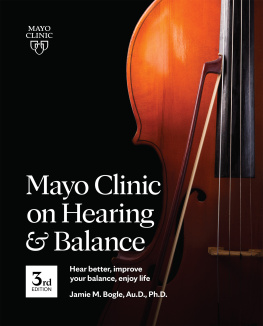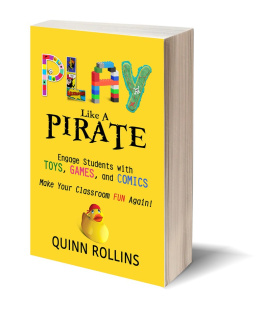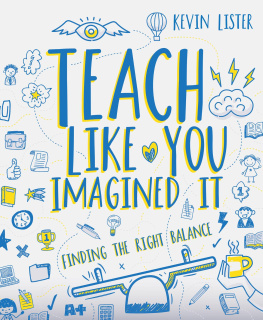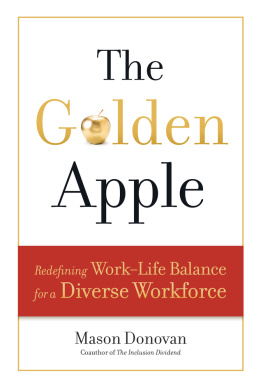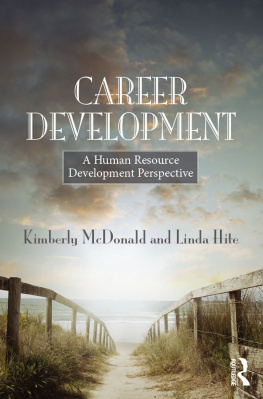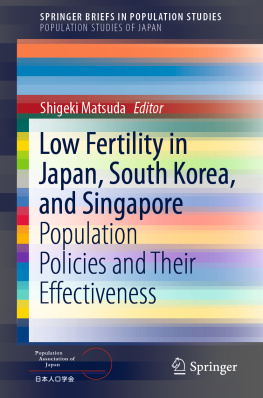Recent Titles in Health and Medical Issues Today
Medicare
Jennie Jacobs Kronenfeld
Illicit Drugs
Richard E. Isralowitz and Peter L. Myers
Animal-Assisted Therapy
Donald Altschiller
Alcohol
Peter L. Myers and Richard E. Isralowitz
Geriatrics
Carol Leth Stone
Plastic Surgery
Lana Thompson
Birth Control
Aharon W. Zorea
Bullying
Sally Kuykendall, PhD
Steroids
Aharon W. Zorea
Suicide and Mental Health
Rudy Nydegger
Cutting and Self-Harm
Chris Simpson
Discrimination against the Mentally Ill
Monica A. Joseph
Concussions
William Paul Meehan III
Drug Resistance
Sarah E. Boslaugh
W ORK L IFE B ALANCE
Janice Arenofsky
Health and Medical Issues Today

Copyright 2017 by ABC-CLIO, LLC
All rights reserved. No part of this publication may be reproduced, stored in a retrieval system, or transmitted, in any form or by any means, electronic, mechanical, photocopying, recording, or otherwise, except for the inclusion of brief quotations in a review, without prior permission in writing from the publisher.
Library of Congress Cataloging-in-Publication Data
Names: Arenofsky, Janice, author.
Title: Work-life balance / Janice Arenofsky.
Description: Santa Barbara, California : Greenwood, [2017] | Series: Health and medical issues today | Includes bibliographical references and index.
Identifiers: LCCN 2016040732 (print) | LCCN 2016054463 (ebook) | ISBN 9781440847134 (hard copy) | ISBN 9781440847141 (ebook)
Subjects: LCSH: Work and family. | Work-life balance.
Classification: LCC HD4904.25 .A74 2017 (print) | LCC HD4904.25 (ebook) | DDC 306.3/61dc23
LC record available at https://lccn.loc.gov/2016040732
ISBN: 978-1-4408-4713-4
EISBN: 978-1-4408-4714-1
21 20 19 18 17 1 2 3 4 5
This book is also available as an eBook.
Greenwood
An Imprint of ABC-CLIO, LLC
ABC-CLIO, LLC
130 Cremona Drive, P.O. Box 1911
Santa Barbara, California 93116-1911
www.abc-clio.com
This book is printed on acid-free paper 
Manufactured in the United States of America
To my mother, Pearl Moster, one of the many thousands of spirited women who launched careers for themselves in the 1960s and enjoyed every moment of the freedom and independence that paid employment conveys.
To my husband and pet family who boosted my spirits and never complained while I struggled with my own worklife balance issues in the research and writing of this book.
C ONTENTS
S ERIES F OREWORD
Every day, the public is bombarded with information on developments in medicine and health care. Whether it is on the latest techniques in treatment or research, or on concerns over public health threats, this information directly affects the lives of people more than almost any other issue. Although there are many sources for understanding these topicsfrom websites and blogs to newspapers and magazinesstudents and ordinary citizens often need one resource that makes sense of the complex health and medical issues affecting their daily lives.
The Health and Medical Issues Today series provides just such a one-stop resource for obtaining a solid overview of the most controversial areas of health care in the 21st century. Each volume addresses one topic and provides a balanced summary of what is known. These volumes provide an excellent first step for students and lay people interested in understanding how health care works in our society today.
Each volume is broken into several sections to provide readers and researchers with easy access to the information they need:
- provides overview chapters on background informationincluding chapters on such areas as the historical, scientific, medical, social, and legal issues involvedthat a citizen needs to intelligently understand the topic.
- provides capsule examinations of the most heated contemporary issues and debates, and analyzes in a balanced manner the viewpoints held by various advocates in the debates.
- provides a selection of reference material, such as annotated primary source documents, a timeline of important events, and a directory of organizations that serve as the best next step in learning about the topic at hand.
The Health and Medical Issues Today series strives to provide readers with all the information needed to begin making sense of some of the most important debates going on in the world today. The series includes volumes on such topics as stem-cell research, obesity, gene therapy, alternative medicine, organ transplantation, mental health, and more.
A CKNOWLEDGMENTS
I wish to express thanks to all the scientific researchers and experts whose learned findings found their way into this book. Specifically, Id like to thank Joan Williams, Distinguished Professor of Law and Hastings Foundation Chair at the University of California, Hastings College of the Law and the Founding Director of WorkLife Law Center, for sharing several of her papers.
I NTRODUCTION
The phrase worklife balance or WLB has been tossed around by experts from different disciplines for decades, and still no one agrees on one definition. The multi-layered individuality of the term is the real reason because its meaning is shaped by the needs, goals, desires, and commitments of everyday working men and women from every ethnicity, profession, trade, country, and generation in the world. It is ludicrous to think that the WLB issues of a Baby Boomer contemplating retirement are exactly the same as a Millennial intent on advancing up the career ladder. Yes, both workers share the same WLB urge to establish boundaries between work and family and use technology and time management strategies to advance that goal, but both workers are not engaged by the same benefits or non-salaried perks. Human resource people know that child care benefits no longer attract talented Boomers in their 50s and 60s, and Millennials probably are more interested in tuition payoffs than onsite fitness clinics.
Where the commonality of diverse generations lies is in the desire for engagement, productivity, and managerial support in a culture that appreciates them and makes good use of their varied talents and skills. This is the domain and responsibility of all legitimate organizations interested in the bottom line as well as nurturing a culture responsive to the needs of their workers. All employees want to work in an environment where their ethnicity, gender, and religion is respected; where they can dress and wear their hair in a manner appropriate to their values and professional decorum; where they can communicate and contribute creatively with colleagues and supervisors; and where they can take advantage of flextime without fearing their co-workers and superiors will stigmatize them. All employees want to work in an environment that discourages incivility, harassment of any kind, and bullying and that disallows discrimination in any form. That kind of culture is conducive to a stress-free WLB for employees and management and is a hospitable environment that organizations and corporations can promote proudly as a community-minded, eco-friendly brand that attracts contented, highly motivated employees who reflect the demographics of the consumers they serve and espouses a commonsense credo of productivity and economic health.
But employers cannot do everything, and that is where local, state, and federal governments come in to help build an infrastructure of paid family leave, higher minimum wages, and affordable child care. According to Organisation for Economic Co-operation and Development (OECD), the United States needs to catch up in these areas and emulate other industrialized countries such as Sweden and Denmark.
Next page


